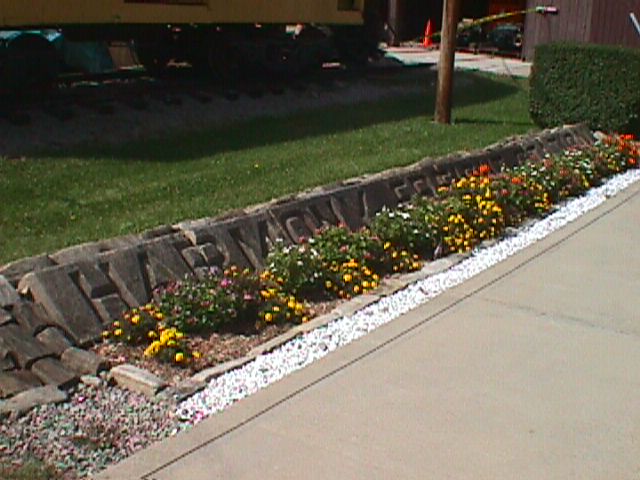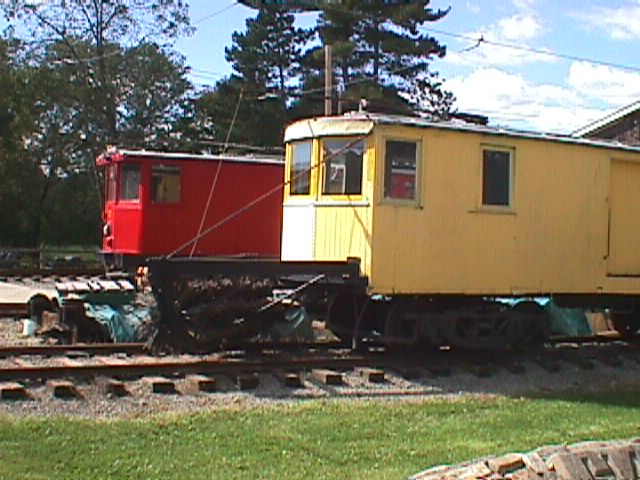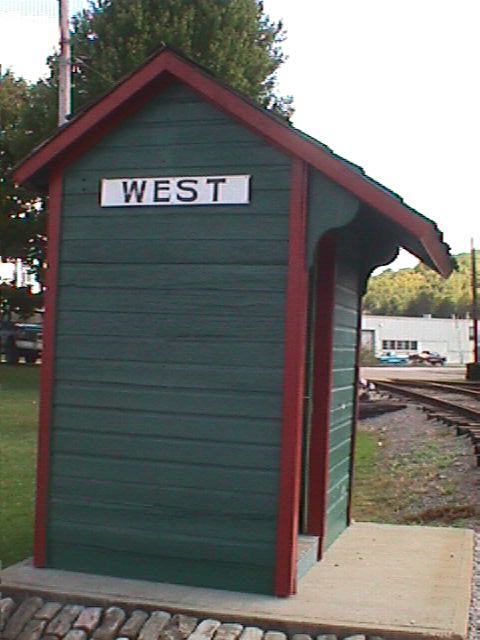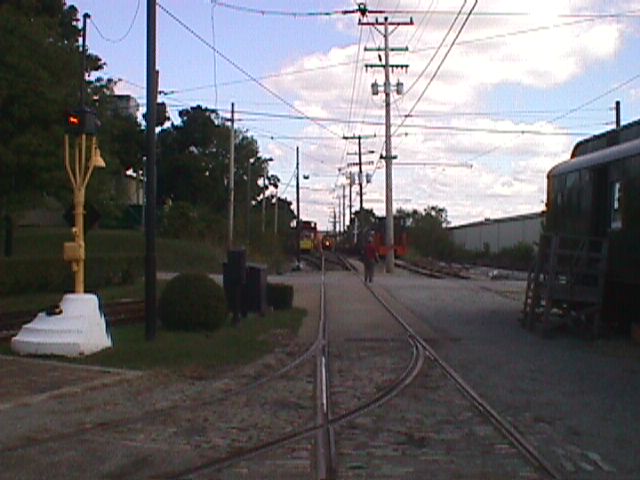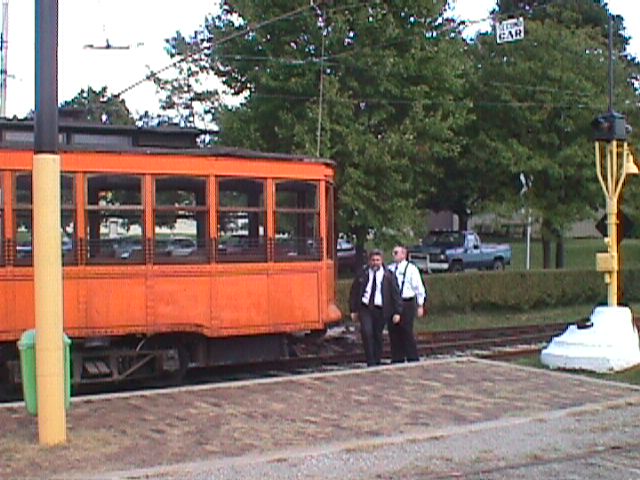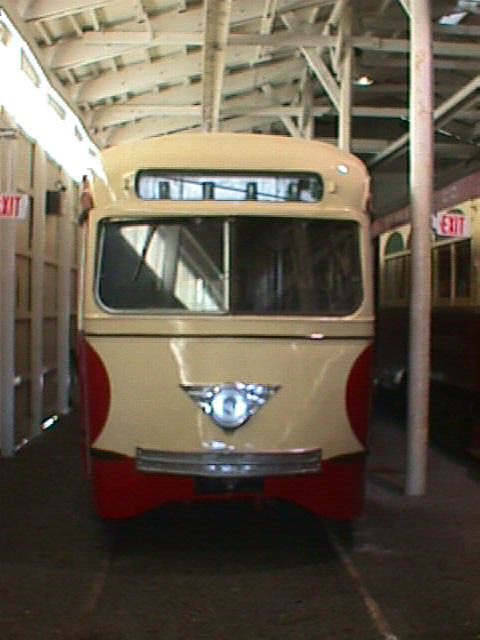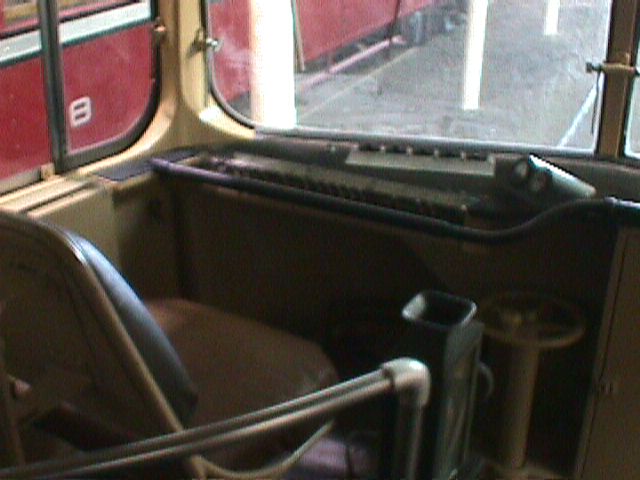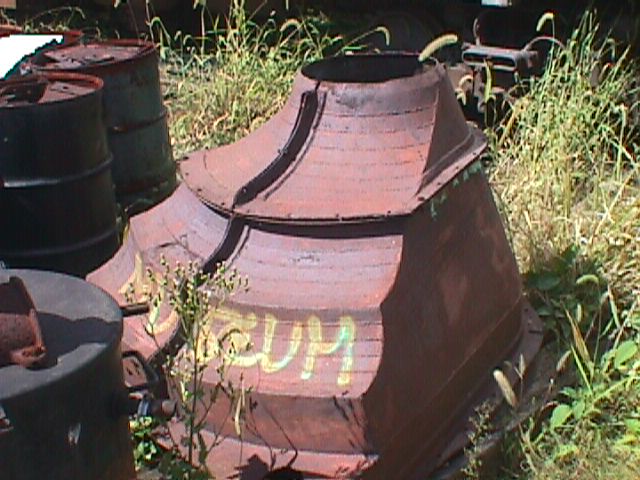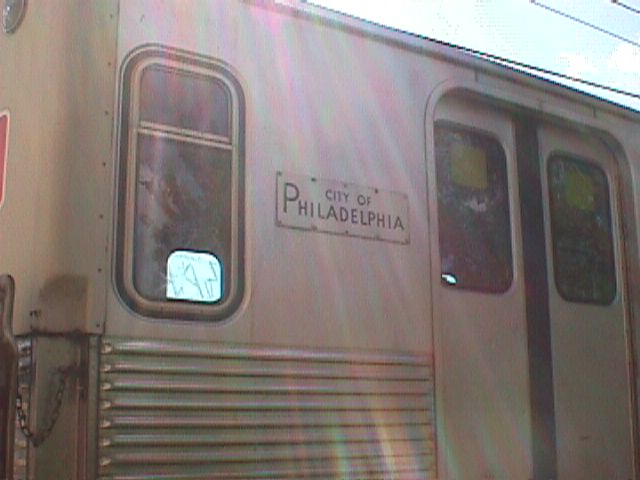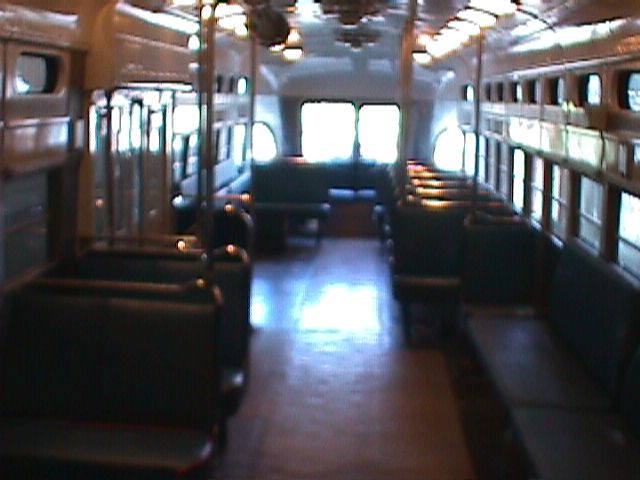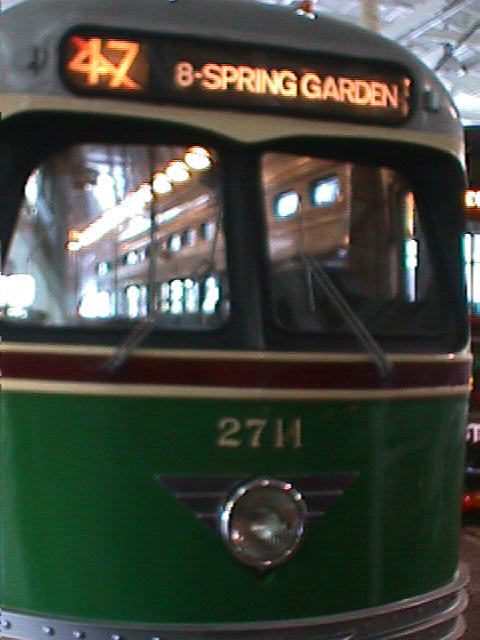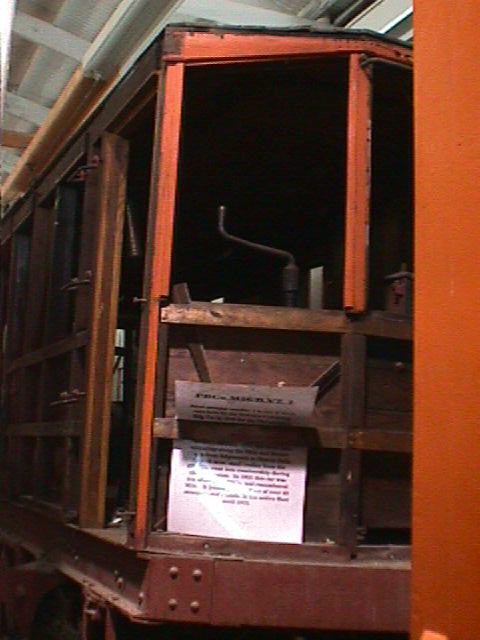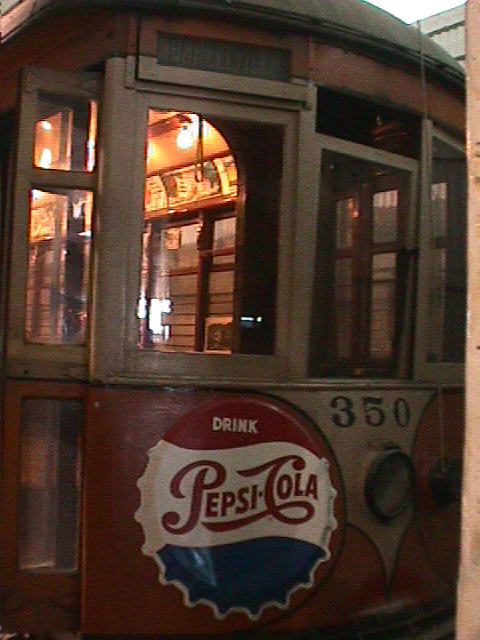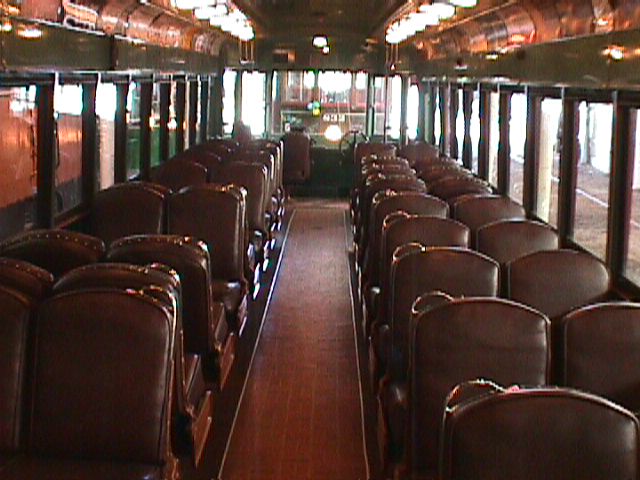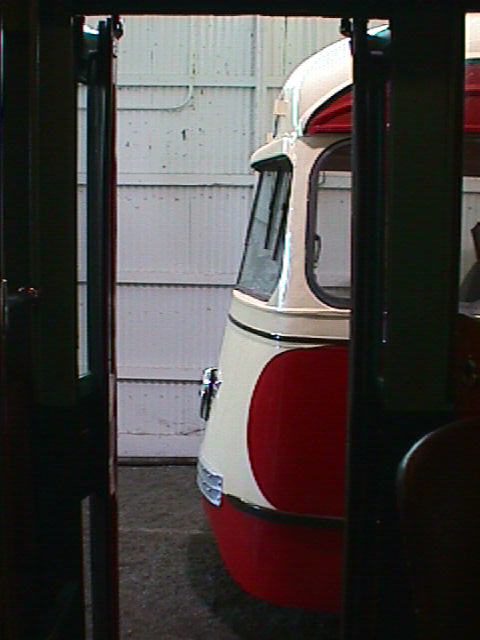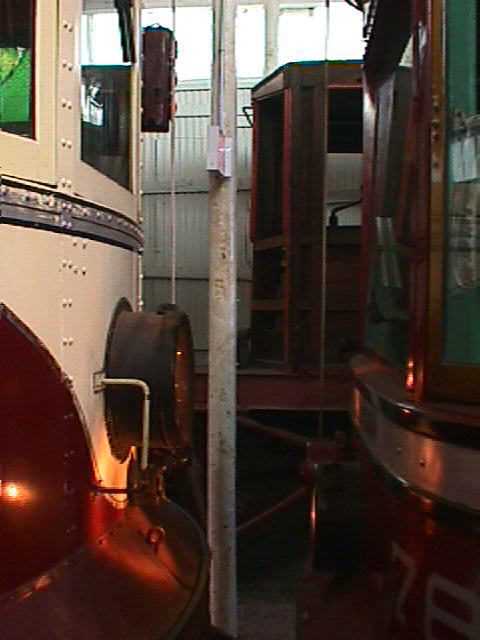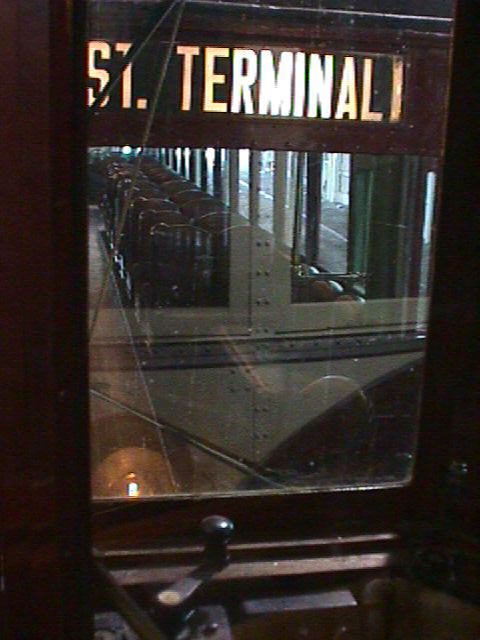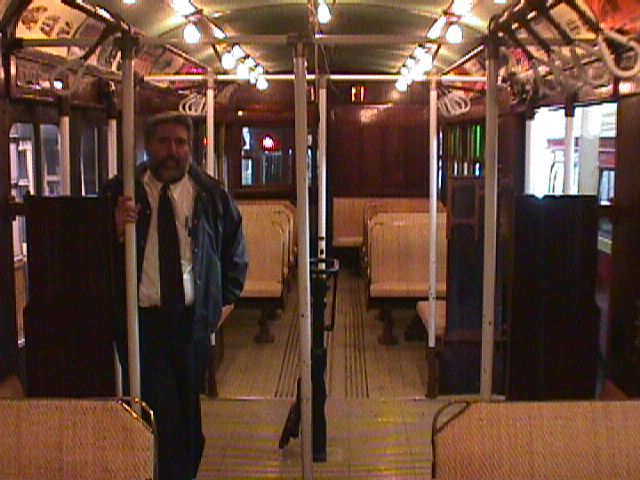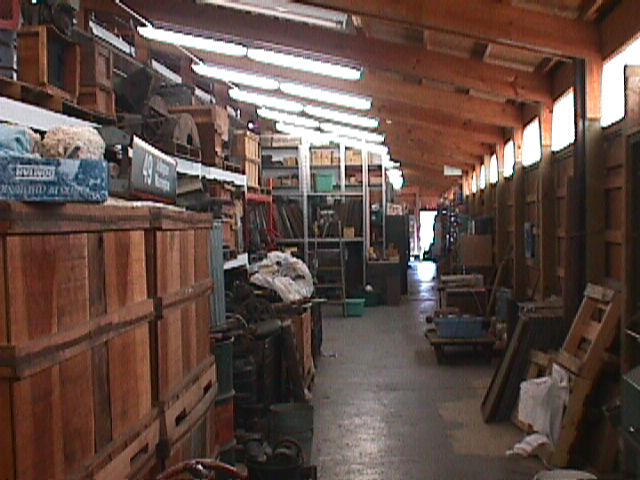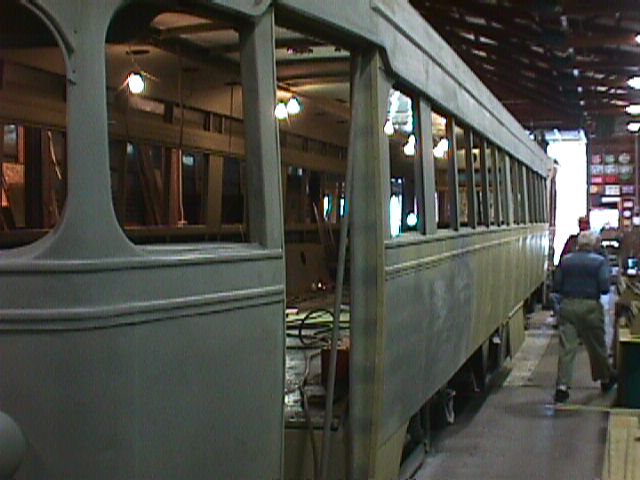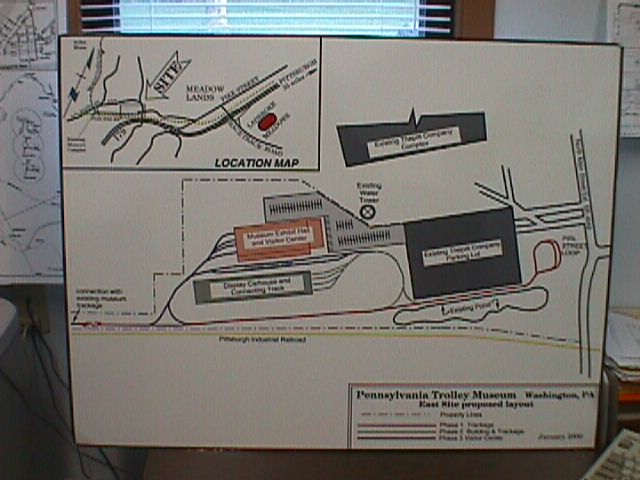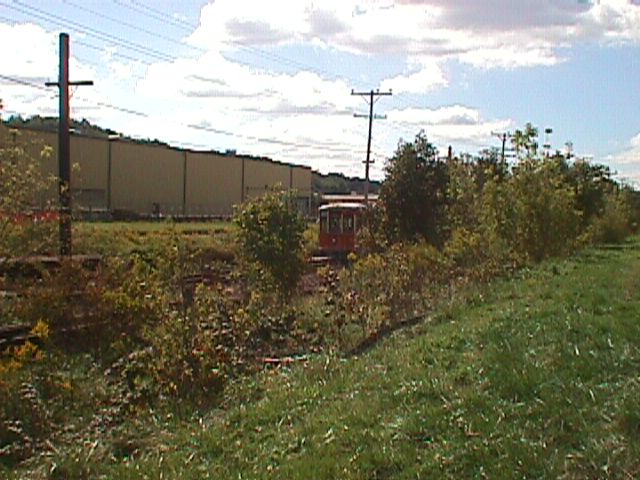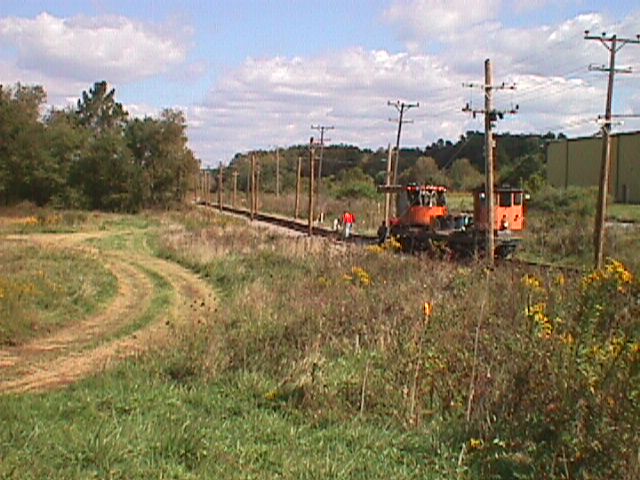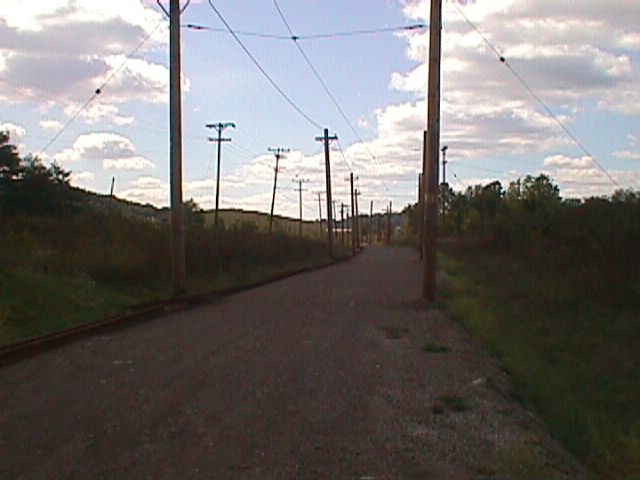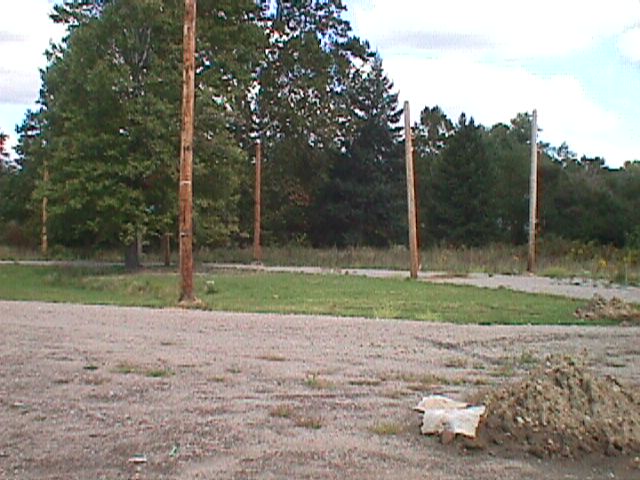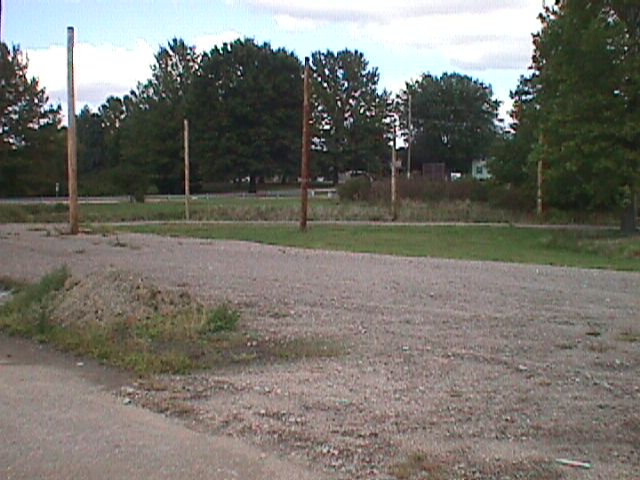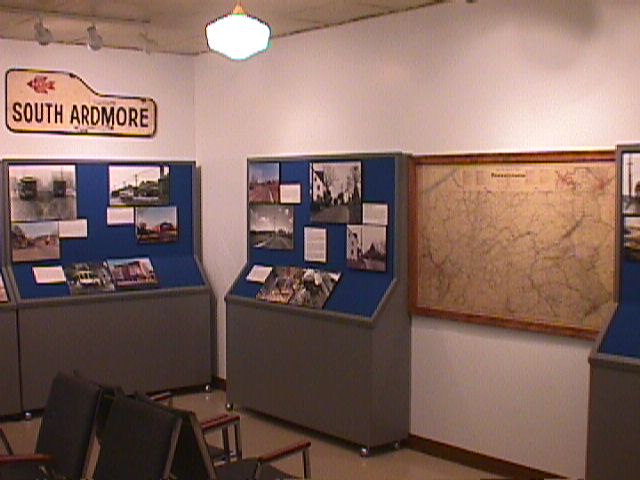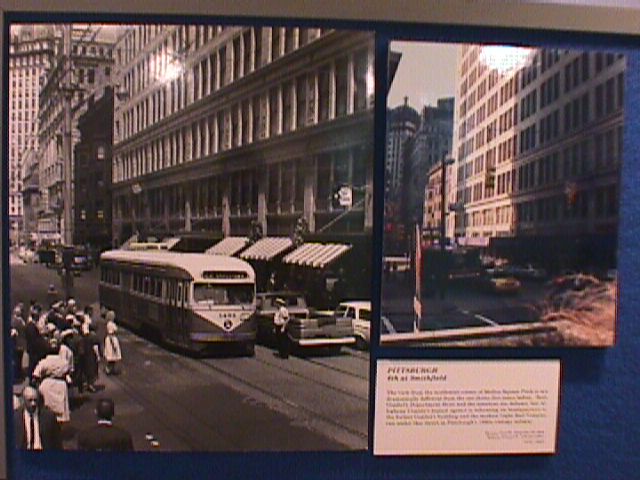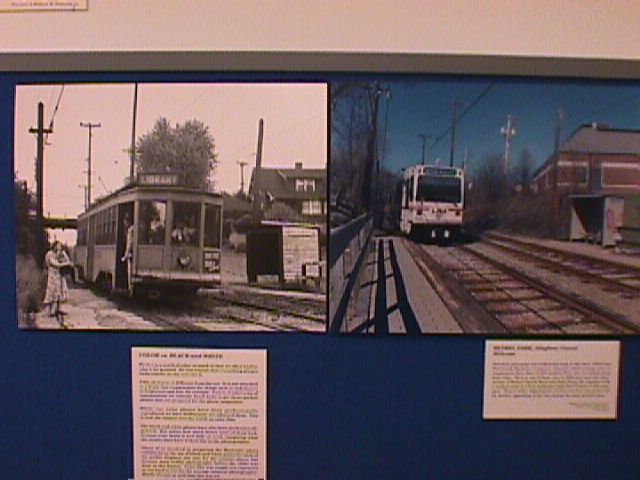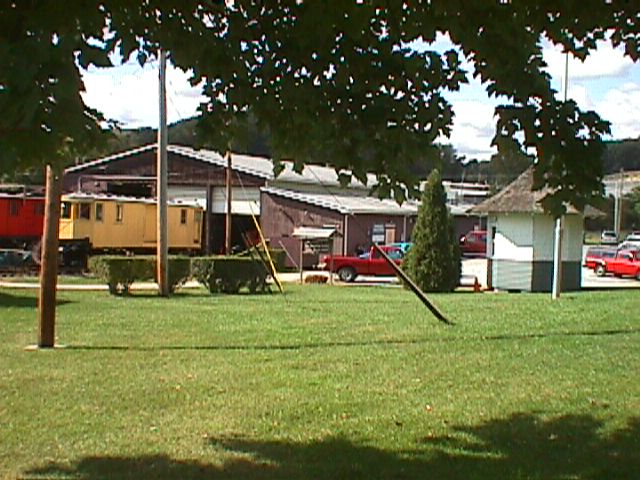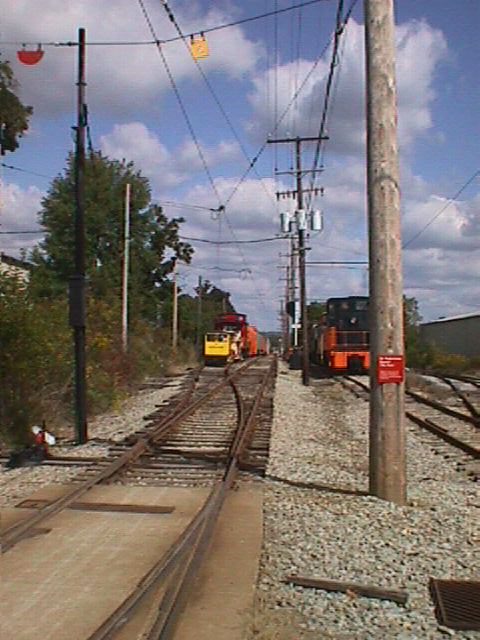Pennsylvania Trolley Museum
Houston, PA — September 29, 2001
by Bob LeBras
Upon the personal invitation of Museum Executive Director, Scott Becker, I returned to the Pennsylvania Trolley Museum near Houston, PA on September 29, 2001. Located along a small industrial park across from the Washington County Fairgrounds, the museum is easily accessed via Interstate 79 from the Meadowlands exit.
Started in 1953 as the Pittsburgh Electric Railway Club, the museum has grown immensely over the subsequent years thanks to the generosity of individuals, corporations, government and the transit industry. Truly, a herculean effort has been undertaken to preserve an important part of America’s history in this sleepy, still farm-oriented community in southwestern Pennsylvania.
The reason for the return trip to the museum was because of a less-than-expected experience the prior week. Mr. Becker invited me back and offered to conduct a personal tour to demonstrate both his, and the volunteers, commitment to providing an enjoyable and memorable historical journey for all visitors. I was excited about the prospect of a detailed tour, and I was definitely not disappointed.
I met Mr. Becker, a kind, softspoken gentleman, at the entrance to the Museum Store promptly at 1:00 p.m. He apologized for my previous week’s trip, handed me a Guest ticket and brochure, I outlined my interest in railfanning, and we proceeded to tour the grounds. Scott took me to every corner of the property, introduced me to volunteers who live on my street, and explained every facet of the museum’s operations, it’s collection, and the future plans. He answered every question with authority and conviction. His enthusiasm is boundless, and his commitment to preserving our electric rail heritage is immense. I was both impressed and gratified to have the opportunity to meet this man of the rail cloth.
We first toured the trolleybarn which I noted had been rebuilt in metal to the same dimensions as the original wood structure. I took an extensive amount of time here along with a significant trip back in time. Scott pointed out the various trolleys and detailed their histories. He even pointed out good photographic angles to me and raised the pole on a PCC so that I could photograph the interior. My enthusiasm grew with each trolley we boarded.
Scott then took me out the back door of the barn explaining that it was not on the normal tour, but there were a couple of things that I should see. I was absolutely blown away to see a City of Philadelphia transit car in pristine stainless steel parked behind the shed. Scott explained that SEPTA and the City of Brotherly Love have been very generous to them allowing a museum volunteer their pick of cars for transfer, then ensuring the selected car was absolutely complete with original operating manuals. They even left rolls of film in the cab with photos of the car undergoing rehabilitation. A truly amazing tale of cross-state cooperation.
Also, out back, there was an interesting artifact that the Port Authority Transit of Allegheny County (PAT) found that even they didn’t know they had. Scott asked me what I thought it was?
It looked like a big hunk of iron and I could not discern its purpose. He explained that it was the mold for the concrete trolley passenger stops that dotted the city. Instantly, I recognized it and was amazed that PAT didn’t throw anything away. Indeed, one of the PCC trolleys inside the barn, restored by Bombardier, was given brand new wheels by PAT because they had them in stock.
Next, we toured the parts storage area that would make any railfan drool. Stacked floor-to-ceiling were parts ranging from the smallest bolts to heavy traction motors, and everything in between. There were seats, fareboxes, and storage bins filled with every imaginable pieces parts. My only thought was that, these alone, could fetch hundreds of thousands of dollars on eBay.
The next stop on the tour was the, generally, off-limits restoration facility. Here I was introduced to volunteers who have spent years of their free time rebuilding trolleys. I could feel the sense of dedication and pride these folks lavish on thier creations in infinitesimal detail on a 1:1 scale.
Scott took me to the museum’s administrative offices and showed me their ambitious $10 million expansion plans which include a new, interactive visitor’s center and expanded rail operations. Everything I saw was designed to be both historically accurate, and engage visitor’s of all ages in the history and significance of urban and interurban rail transit. During this phase of the tour, I was thinking, “An operating O gauge trolley layout would be perfect.”
Next, Scott drove me, in his minivan, to the far east end of the line, undergoing expansion as I watched. Volunteers were laying and cutting rail, poles have been erected, and wire has been strung a full half mile from the museum site. I saw a graded loop and all it needed was track. Scott also gave me a visual impression of the significant fill required to bring the east end above the flood plain. In fact, all the permits are in place and everything is a go, merely awaiting funding.
Even our parking spot overlooking the work-in-progress was interesting because the company, Rockwell’s Reliance Electric Division, donates storage space to the museum. I asked, “What does Reliance do?”
Scott answered, “They rebuild electric traction motors and have donated the time and materials necessary to rebuilding of several of our units.”
I was absolutely stunned by this and got that warm gushy feeling inside which told me that this was truly a community of devoted individuals who have come together in the greatest American spirit of community. Scott further told me that a museum member is the owner of Fife Moving and Storage. His company has been instrumental in transporting many cars in the museum’s collection from distant locations. Even though I had volunteered at the museum in the past, my astonishment continued, unabated, throughout the tour.
Situated along a portion of the original transit line between Pittsburgh and Washington, PA, on well-maintained land graciously leased by Washington County, combined with the cooperation of many local businesses, a band of dedicated volunteers, and headed by an enthusiastic, knowledgeable historian and railfan, the Pennsylvania Trolley Museum is on-track to a bright future, and well-worth a visit. Once there, you’ll likely become hooked by the hands-on experience and the passion for historic preservation.

Harmony Freight Station was torn down, but museum volunteers were able to save this massive stone sign. 
These sweeper cars were built by two different manufacturers. Both operate and the red car has been converted to a line car. 
The museum has several of these passenger shelters all of which are original to various trolley lines in the area. 
Shot down the tracks towards the east end. The crane car performs some minor maintenance. To the left, a yellow flashing signal and concrete barrier once a common site on Pittsburgh streets. 
This trolley jumped the wire. Museum Executive Director, Scott Becker, assists the Conductor in reconnecting the pole to the wire after a smooth glide to station stop. 
Once used as the Museum Store, this Bessemer & Lake Erie heavyweight coach is being prepared for rail transport having been donated to a local organization. 
Pristine is the only word that describes this recently restored PCC trolley by Bombardier complete with rebuilt trucks and new wheels. 
Absent in the PCC are the large controls that were the hallmark of earlier trolleys. Operations are conducted via a series of toggle switches. 
This Philadelphia transit car was a complete shocker in the museum’s backyard. 
Non-descript and forlorn, this hunk of metal was the mold for Pittsburgh’s trolley passenger islands. 
The City of Philadelphia has been very generous to the Pennsylvania Trolley Museum. 
The interior of PCC No. 2711 gleams like the day it was born. 
No. 2711 is a later model PCC with subsequent technological control advancements. 
The sign scroll on No. 2711 was donated by a museum member. 
An early sweeper trolley awaits restoration. 
No. 350 is from Johnstown and is completely intact and original. The Pepsi sign, specifically designed for trolley car use, was donated by a museum member. 
Scott called No. 350, “A time capsule. I swear you can smell the steel in it.” 
According to Scott, and I believe him, “These are the most comfortable seats at the museum.” Can you imagine riding to work in this luxury and comfort? 
This Red Arrow Lines interurban still has the familiar controls of its ancestors. 
Scott suggested I take this photo showing the stylish Art Deco raked lines of the PCC. 
Impressively massive marker lights on the Brill-built Red Arrow heavyweight. 
Built only about a half-decade apart, and nose-to-nose, these two Brills from the Red Arrow are wholly different in construction. 
Looking past the enclosed control stand of one Brill trolley into the luxurious accommodations of another. 
Museum Executive Director, Scott Becker, imparts his extensive knowledge about this immaculate Brill unit. 
You want parts? The museum’s got ’em, floor-to-ceiling. 
Freshly primed just this day, this SEPTA trolley, similar to the PCC but wider, has been the pet restoration project of a museum volunteer since he was 15 years old. 
Nose shot of one of the museum’s four historic sweeper trolleys. 
Control cab of the museum’s center dump hopper trolley. Only the Pennsylvania Trolley Museum and the City of Boston have one. 
It’s dark, but you can see the massive metal of the center dump trolley. 
This map shows the future expansion plans for the east end site. 
Scheduled tourist trolley stops at the east end. Unballasted track continues several hundred yards beyond. 
Museum volunteers cut rail while the crane car sits on unballasted track. 
Graded roadbed, with track laid to the left and wire strung above, patiently awaits the track crew. 
South side of the east end turning loop. 
North side of the east end turning loop. 
A view inside the museum with its many fascinating “then and now” photo comparisons. 
Downtown Pittsburgh, 6th at Smithfield, in front of Gimbel’s Department Store. 
Bethel Park, PA both yesterday and today. As a railfan, it’s good to know that the tried-and-true ideas are still the best ones. 
“All Aboard! Next stop, Pittsburgh.” 
Trolley heads east along the ancient right-of-way. 
The manicured museum grounds. On this day, a young boy was having the birthday party of a lifetime complete with specially decorated trolley. 
A final glimpse eastward; a journey into the past, and a look towards the future of the Pennsylvania Trolley Museum.

